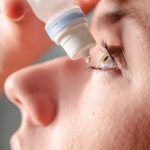
Using a weight-loss medication to help you shed pounds gradually appears to help extend life for people with arthritis of the hips or knees, a new study finds. However, folks with arthritis who dropped pounds very quickly showed no benefit in terms of survival, and even a slight uptick in their risk for heart disease, a team of American and Chinese researchers found. The study’s take-home message: “Gradual weight loss by anti-obesity medications may improve the overall wellness of overweight or obesity patients with knee or hip osteoarthritis,” concluded a team led by Jie Wei of Central South University in Changsha, China. The findings were published recently in the journal Arthritis & Rheumatology. Obesity can exacerbate arthritis in the joints, and is a known risk factor for an early death. In the new study, Wi’s group tracked outcomes for over 6,500 British people, aged 40 or older, who were overweight or obese and also had knee or hip arthritis. Some took weight-loss drugs to help them shed excess pounds. Wei’s team tracked their outcomes for various health conditions and death over a five-year period. The data was collected between 2000 and March of 2022 — before the advent of blockbuster weight-loss medications such as Wegovy and Zepbound. Instead, patients were taking drugs such as orlistat (Alli), sibutramine and rimonabant (Zimulti) to help them get slimmer.… read on > read on >


















